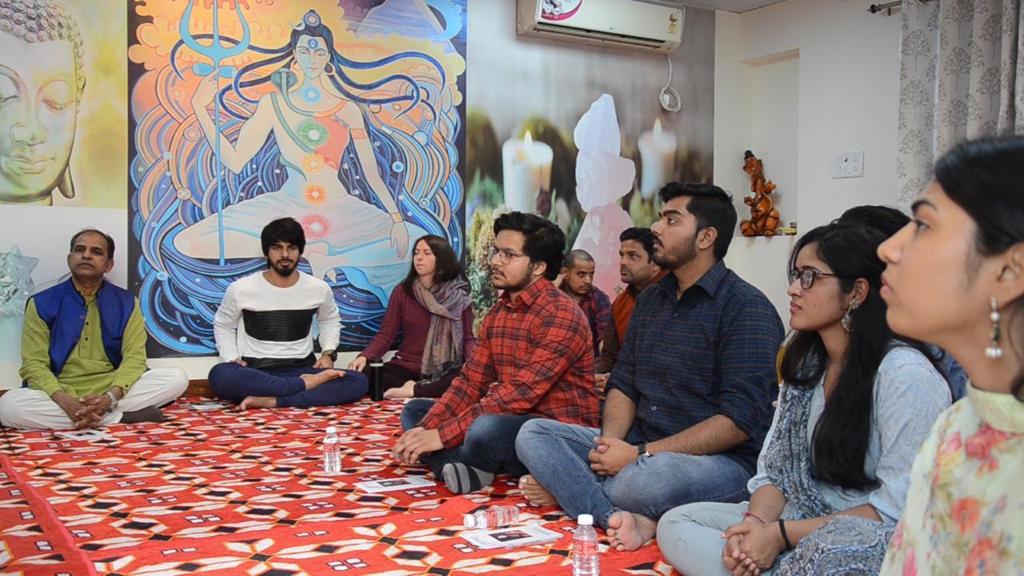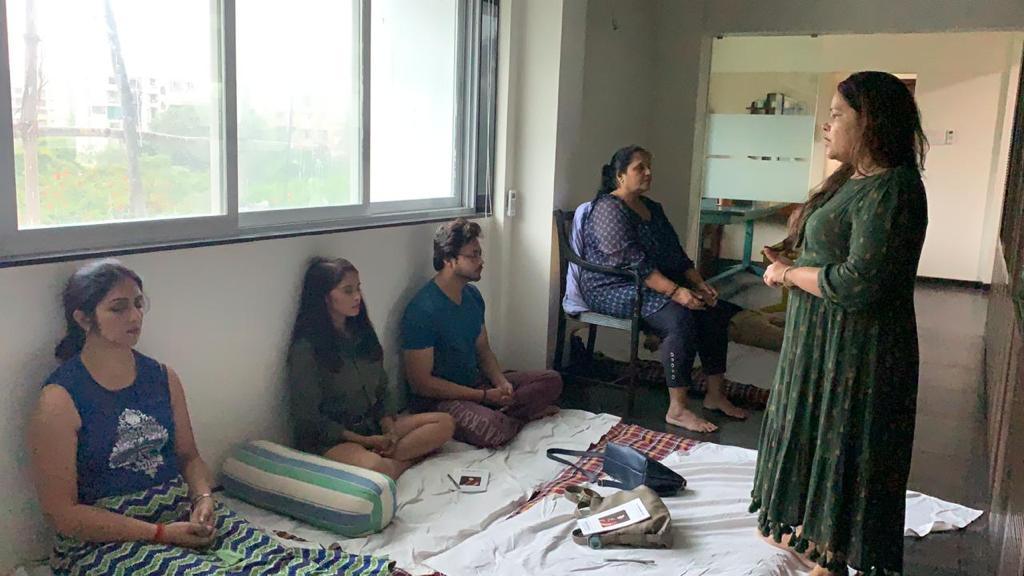
Bhagavad Gita Teacher Training: Deepening Your Yoga Practice and Knowledge of Hindu Spirituality
Bhagavad Gita is a sacred Hindu scripture that offers spiritual guidance and wisdom to its readers. Bhagavad Gita teacher training is a specialized program that helps yoga teachers and practitioners understand the teachings of the Bhagavad Gita and incorporate them into their yoga practice and teachings.
What is Bhagavad Gita Teacher Training?
Bhagavad Gita Teacher Training is a specialized program that is designed to help yoga teachers and practitioners deepen their understanding of the teachings of the Bhagavad Gita and incorporate them into their yoga practice and teachings. The Bhagavad Gita is a sacred Hindu scripture that is widely considered to be one of the most important texts in the Hindu tradition. It offers guidance on spirituality, ethics, and morality, and has been a source of inspiration for countless people around the world.

Overview of the Program
Bhagavad Gita Teacher Training is a program designed to equip individuals with the knowledge and skills required to teach the principles of Bhagavad Gita. The program aims to deepen one's understanding of the Bhagavad Gita and provide guidance on how to effectively convey its teachings to others. The program typically covers a wide range of topics related to the Bhagavad Gita, including its historical context, philosophical concepts, and practical applications. Participants learn about the various interpretations and commentaries on the Bhagavad Gita and how to apply its teachings in their personal and professional lives.
Purpose of Bhagavad Gita Teacher Training
The purpose of Bhagavad Gita Teacher Training is to equip individuals with the knowledge, skills, and confidence required to effectively teach the principles of the Bhagavad Gita to others. The Bhagavad Gita is a complex text that contains profound philosophical and spiritual insights, and teaching it requires a deep understanding of its teachings and practical applications. By undergoing Bhagavad Gita Teacher Training, individuals can deepen their understanding of the text and gain insights into how to convey its teachings to different audiences. They can learn about the various commentaries and interpretations of the Bhagavad Gita and how to apply its teachings in different contexts. Bhagavad Gita Teacher Training also helps individuals develop their communication and leadership skills, enabling them to connect with and inspire their students. The program can be valuable for those who wish to become spiritual leaders or teachers, but it can also benefit anyone who wishes to deepen their understanding of the Bhagavad Gita and its teachings.
Curriculum of Bhagavad Gita Teacher Training
Study of the Text:
The curriculum of Bhagavad Gita Teacher Training typically includes a deep study of the text of the Bhagavad Gita, which is the primary focus of the program. Participants may study the original Sanskrit text as well as translations and commentaries by various scholars and teachers. The program may also cover the historical context of the Bhagavad Gita and its significance in Hinduism and Vedanta.
Philosophical Concepts:
The program may also cover philosophical concepts and themes that are central to the Bhagavad Gita, such as karma, dharma, jnana, and bhakti. Participants may learn about the different schools of thought within Hinduism and Vedanta, and how they relate to the teachings of the Bhagavad Gita.
Practical Applications:
The Bhagavad Gita is not just a philosophical text, but also contains practical insights and guidance for living a meaningful and fulfilling life. The curriculum may include discussions and exercises on how to apply the teachings of the Bhagavad Gita in everyday life, including in personal relationships, work, and spiritual practice.
Teaching Methodology:
Bhagavad Gita Teacher Training also includes training in teaching methodology, helping participants develop effective communication skills, classroom management, and lesson planning. Participants may learn about different teaching styles and techniques and how to adapt their teaching to different audiences.
Assessment and Evaluation:
Assessment and evaluation are important components of any teacher training program, and Bhagavad Gita Teacher Training is no exception. Participants may be required to give presentations, lead discussions, and demonstrate their understanding of the text and its teachings. Feedback and evaluation are provided to help participants improve their teaching skills and deepen their understanding of the Bhagavad Gita.
Historical and Cultural Context:
he historical and cultural context of the Bhagavad Gita is an important aspect of Bhagavad Gita Teacher Training. Understanding the historical and cultural background of the text is essential to gain a deeper understanding of its teachings and significance. Participants may learn about the social, political, and religious context in which the Bhagavad Gita was composed, including the historical events that led up to the battle of Kurukshetra, which is the setting of the text. They may also learn about the various schools of thought and philosophies that were prevalent in ancient India, and how they influenced the composition and interpretation of the Bhagavad Gita. Cultural practices and traditions that are associated with the Bhagavad Gita may also be explored, such as the role of yoga and meditation in Hinduism and Vedanta. Participants may gain an understanding of how the teachings of the Bhagavad Gita have influenced Indian culture and society over the centuries, and how it continues to be relevant in contemporary times. Overall, studying the historical and cultural context of the Bhagavad Gita provides participants with a broader perspective and deeper appreciation for the text, and can help them effectively convey its teachings to different audiences.
